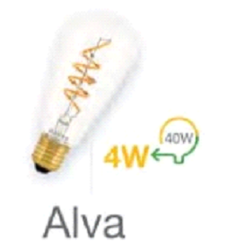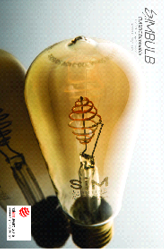03/04/2025
In a recent ruling, the General Court provided clarity on the interpretation of the 12-month grace period under EU design law, offering valuable insights for designers navigating the complexities of protecting their creations.
The case, Lidl v EUIPO (Case T-66/24), examined how earlier disclosures made within the grace period are treated under the EU’s Community Design Regulations (CDR).
The key takeaway from this judgement being that the ‘grace period’ exception under Article 7(2) CDR does not require that the earlier design is identical to the contested design, instead, it is sufficient is the earlier design provides the same overall impression as the contested design.
Background
Lidl Vertriebs GmbH & Co. KG (“Lidl”) filed an application with the EUIPO on 25 March 2021 to invalidate a registered community design no. 003619881-0001 filed by Liquidleds Lighting Corp., on 12 January 2017.
The design, as shown below, was filed in Locarno Class 26.04 (“LED light bulbs”):

The invalidity claim was based on two earlier designs (D1 and D2), shown below, which were publicly disclosed by Liquidleds Lighting, before the filing date of the contested design.


- On 23 September 2022, the Invalidity Decision dismissed the application for a declaration of invalidity.
- On 28 November 2022, Lidl filed a notice of appeal with EUIPO against the decision.
- By the contested decision, the Board of Appeal dismissed the appeal. It found, first, that disclosure of the earlier design D1 was covered by the scope of the exception provided for in Article 7(2) of CDR, and, second, that the applicant had not demonstrated disclosure of the earlier design D2.
- Lidl raised an action with the General court disputing the contested decision with regards to the assessment of the Board of Appeal concerning D1.
- Lidl argued that the conditions of Article 7(2) CDR were not fulfilled because D1 is not identical to the contested design.
Grace Period – Article 7(2) CDR
Under Articles 4 to 6 CDR a design shall be protected by a Community design if it is new and has individual character over any design made available to the public before the effective filing design of the community design.
However, Article 7(2) CDR provides the following:
A disclosure shall not be taken into consideration for the purpose of applying Articles 5 and 6 i.e., for the assessment of novelty and individual character, if:
1. a design for which protection is claimed under a registered Community design has been made available to the public:
2. by the designer, their successor in title, or a third person as a result of information provided or action taken by the designer or their successor in title; and
3. during the 12-month period preceding the date of filing of the application or, if a priority is claimed, the date of priority.’
The key question in this case was whether D1, which was disclosed by the designer within the 12-month period preceding the filing date of the contested design, should be considered as prior art when evaluating novelty and individual character or whether D1 fell within the grace period exception.
To decide this the General Court had to determine whether the contested design needed to be identical to D1 to qualify for the ‘grace period’ exception, or if it was sufficient for the designs to produce the same overall impression.
The General Court’s Decision
In its judgment, the General Court rejected Lidl’s invalidity claim explaining that the ‘grace period’ exception under Article 7(2) CDR does not require D1 to be identical to the contested design. Instead, it was enough that D1 created the same overall impression as the contested design.
The court stated that interpretation put forward by Lidl would mean that “by registering a design which is not identical to the design tested in the market place, the designer or his or her successor in title would run the risk of having his or her own disclosure of that earlier design, during the grace period, relied upon against him or her in invalidity proceedings”.
Further, the court went on to state that “such an interpretation would be contrary to the aim of Article 7(2) of Regulation No 6/2002 and, more generally, of the protection system of Community designs, intended to enable the designer to test a design in the market place and to encourage innovation and development of products”.
Comments
This judgment aligns with the intended purpose of ‘grace period’ provision under Article 7(2) CDR.
The grace period was introduced to offer designers flexibility in the early stages of a product’s development, allowing them to assess its commercial potential before committing to the costs of a design registration. It ensures that designers do not have to worry about earlier disclosures (within 12 months), which are not identical, but provide the same overall impression, jeopardising their design registrations validity. The court’s interpretation reflects the practical realities of design development, where products typically undergo multiple iterations based on testing and feedback before reaching their final form.
Although, we believe this is how the grace period provision was intended to be implemented, this decision provides important confirmation for designers looking to protect their designs at the EUIPO.
However, determining whether an earlier design creates the same overall impression as a later design can be subjective. As a result, designers should still exercise caution when relying on the ‘grace period’ exception
Interestingly, while the case was ongoing, the EU legislature amended the introductory language of Article 7(2) to specifically state that “A disclosure shall not be taken into consideration for the purpose of applying Articles 5 and 6 if the disclosed design, which is identical with, or does not differ in its overall impression from, the design for which protection is claimed under a registered EU design, has been made available to the public”.
We will have to wait and see if Lidl appeals this decision to the Court of Justice of the EU.
This article is for general information only. Its content is not a statement of the law on any subject and does not constitute advice. Please contact Reddie & Grose LLP for advice before taking any action in reliance on it.




